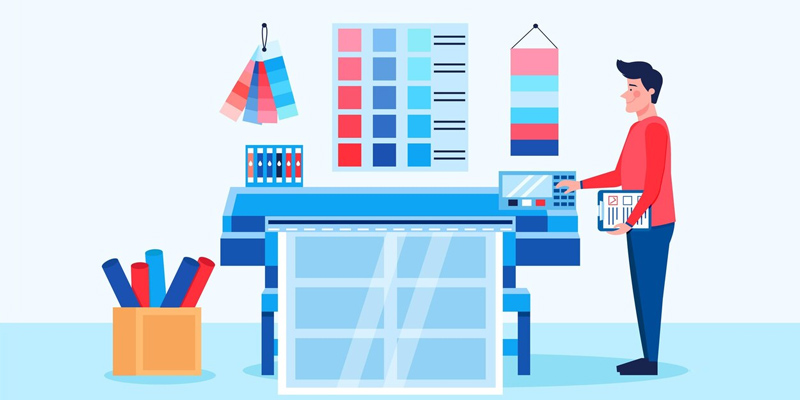5 Lessons From The Most Innovative Ecommerce Brands
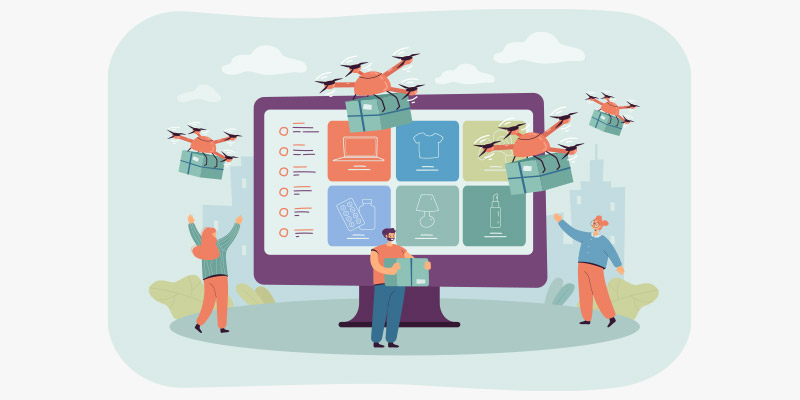
Featured Image: Freepik.com/pch.vector
Innovation and ecommerce seem like they go hand in hand. The pandemic of 2020 was hard on retail stores, leading to a huge jump in ecommerce brands — and now that people are settling into buying online as the “new normal,” ecommerce websites are being driven to innovation just as a way to stay ahead.
That being said, there are dozens of ways to keep your ecommerce brand afloat — but here are a few examples that stand out from the pack, and the lessons we can pick up from what they’ve done.
Think Crucial: Use Every Platform Available
Our first example isn’t entirely unique in what the brand did, but they do set a high bar for results. Think Crucial is an online-only store for household goods. Originally, they operated only via their ecommerce website, but when the goal was set for serious growth, the founder realized that the site alone would not be enough.
Enter other selling platforms: not just traditional ecommerce sites, but larger sale companies like Wayfair, Overstock, and even Walmart.
The turn to ecommerce has opened up a lot of doors for retailers. While you may never expect your products to be sold in-store at your local Walmart, the qualifications aren’t so stringent for Walmart’s website — and Think Crucial’s CEO recognized the opportunity.
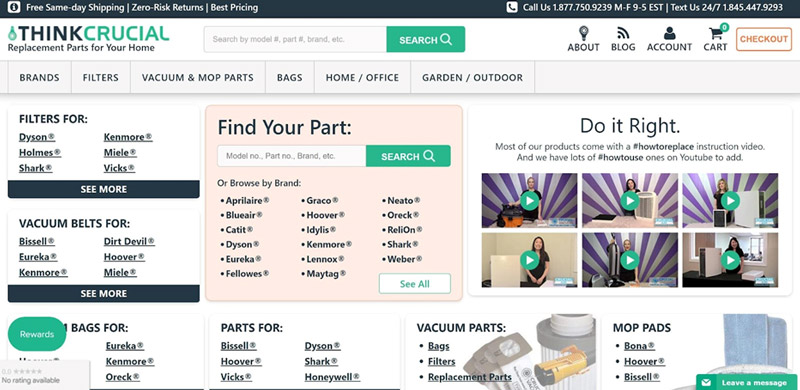
Image Source
With specialized content geared to the customers that were already using each platform, Think Crucial grew to an eight-figure ecommerce brand.
But platforms aren’t just dependent on how the brand uses them. New brands can look at their customers as a separate platform that can be leveraged, especially to boost marketing. Every brand wants to make its mark, and one of the fastest and most effective ways to do that is through word of mouth. These days, “word of mouth” means more than what it sounds like; it’s word of type, word of social media platform, and word of example. If your customers believe in your brand, your marketing is a breeze.
But you still have to get them to that “believing in the brand” goal. For a new company trying to sell online, that can be a challenge.
How do you turn potential customers into actual sales, and boost your marketing budget at the same time?
Girlfriend Collective found a way to hack it. By now, they’re well known for their ethical and sustainably made product model, turning recycled water bottles into active wear. But with the launch of their online brand, they put all their eggs in a basket and offered a free pair of leggings in exchange for word of mouth from potential customers. Not even existing customers, since they were new — potential customers.
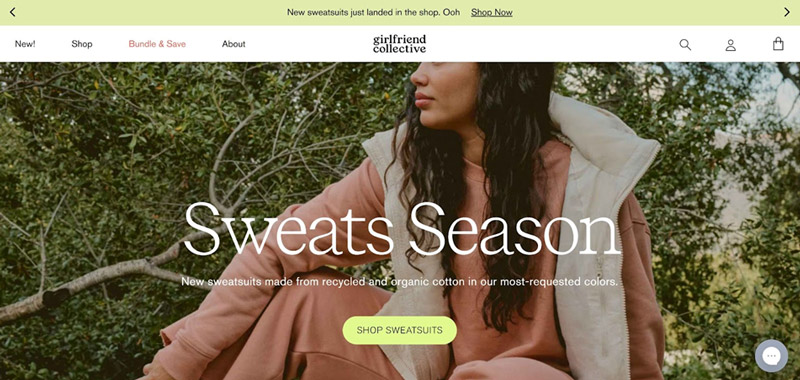
Image Source
Anyone who would post about Girlfriend Collective on their social media account during the timeframe of the launch received the free product. It was an audacious and ambitious way of attacking the problems of growing a customer base and trimming the marketing budget at the same time, and it worked.
It relied heavily on the brand’s confidence in their products; but then, confidence in what you’re offering to your customers is a key point for any brand.
Girlfriend Collective saw success with this initiative, with more than ten thousand orders on the day that they launched. The level at which a new brand can stage a campaign like this will vary; not every brand can afford to give away a 60-80 dollar product freely just as they’re getting started. But the bigger the promise, the bigger the payoff.
The lesson here: Think outside the box when it comes to selling on multiple platforms. The more platforms you sell on, the more opportunities you have to reach customers, and the more your company will grow. Know your audience, have confidence in your product, and leverage the connection between the two.
American Eagle: Use Adaptive Smart Chatbots
Whether your ecommerce brand sells physical products or services such as design, keying your customer service in on their level of interest from the very beginning is an important part of helping them along in the journey from viewer to buyer.
Almost every single ecommerce site that you visit, these days, has a chatbot set up. But there’s a difference between a chatbot and an effective chatbot.
Here are a few examples. A logo design site, Zillion Designs immediately loops in new visitors with a chatbot that tells the viewer about available sales discounts, and then offers help to take advantage of those discounts in order to get what the individual needs. Further conversation helps to identify exactly what the visitor is looking for, make suggestions of searches and products, and allow the visitor to speak with a real, live customer service representative when needed.
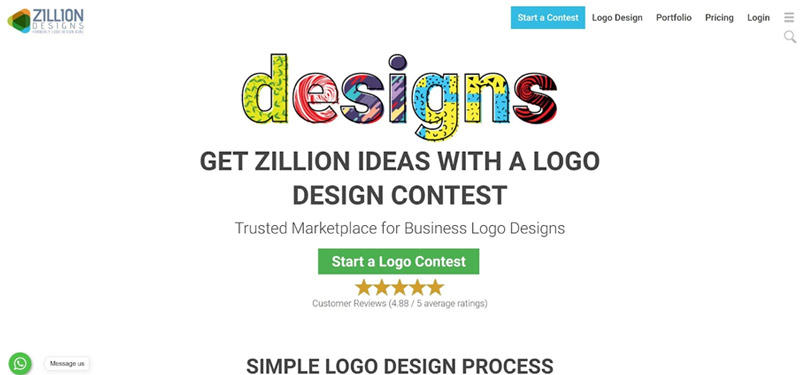
Image Source
But on-site chatbots aren’t the only angle that an ecommerce brand can utilize. More and more, brands are turning to integrated platforms such as Facebook Messenger to promote their brand off-site. If a Facebook user has subscribed to or followed a brand page, and opted in for messaging, they can receive updates, news, and promotions through the FB Messenger app.
One prime example of this is American Eagle Outfitters, which developed FB Messenger bots to engage with customers, and saw over four million messages from consumers in response, with a 25% clickthrough rate for site-directed promotions.
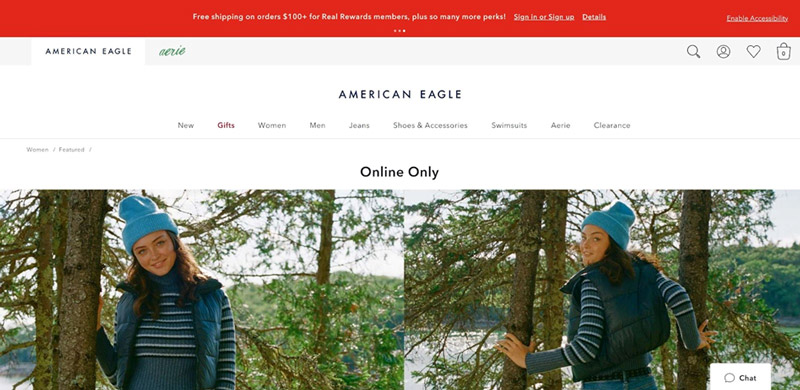
Image Source
The lesson here: Don’t just settle for a chatbot. Develop and integrate unique and compelling voices that combine engaging content with actual usefulness to the consumer, and consider utilizing social media platforms and other messaging apps to diversify your communication opportunities.
Exxcel Outdoors: Know When To Upgrade
Theoretically, there should be a direct link between mobile traffic and mobile sales. But sometimes there’s a lag — and that’s a sure sign that something needs to change.
If you’re seeing far more visitors to your site without a significant increase in actual conversions, it’s time to take stock. That’s what Exxcel Outdoors did. Through analysis of traffic vs. conversions, they realized that they were spending too much time and money in maintaining their old model of ecommerce, and missing out on the opportunities to reinvest that time and money in actual customer service and boosting sales. It was time to upgrade, and they did — to good effect.
After moving to their new ecommerce platform and jettisoning their old model, they established a solid basis for ecommerce, a well-maintained and responsive consumer experience, and saw a conversion increase of almost 300%.
The lesson here: Loyalty to your old ecommerce site won’t help your business to grow. Put the brand first, and be ready to invest in upgrading in order to see continued growth. The ecommerce trend isn’t going anywhere; it’s vital to recognize when you need to expand your horizons, and take action to meet the needs of your customers.
QE Home: Integrate Your Online Brand With Your Offline Brand
There are fewer brick and mortar stores than there used to be, in the aftermath of 2020. But those brands that have been able to reopen and get going again have a unique challenge: how to successfully integrate the in-person experience with the online experience, and keep branding cohesive throughout.
Put simply, you want your customers to know where they are at all times, and keep the same sense of loyalty to your ecommerce site that they would have to your physical location.
This is a challenge simply because the virtual experience is vastly different from the actual experience. But a good example of how this challenge can be met is QE Home, which looked at the online vs. offline experience as a way to actually strengthen their brand and boost customer loyalty.
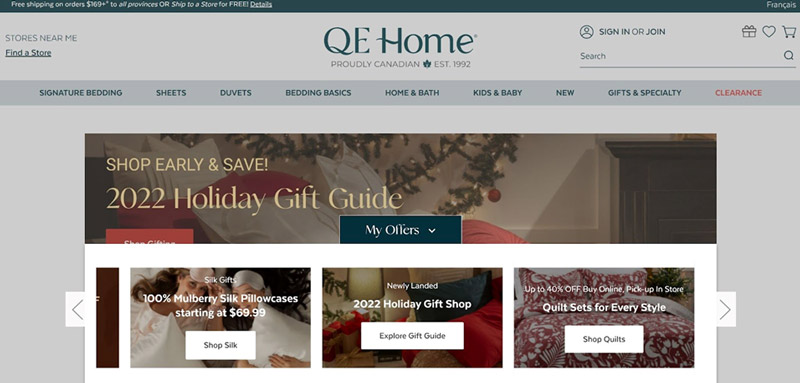
Image Source
The focus was on emulating the in-person shopping mode in a way that delivered the same depth of experience. QE Home set up product groupings that closely imitated in-store arrangements, and then allowed for the consumer to pick and choose the specific details for each product, such as color and size. Real-time SKU search was also incorporated, allowing the consumer to find where the product was located and establish curbside pickup.
While ecommerce shopping is now the norm, it’s clear that we are still driven by the thought of our “old ways” of consumerism. Making the connection between an ecommerce platform and a physical location boosts our emotional investment.
The lesson here: If you have a brick and mortar store, or used to, don’t forget your roots, because your customers certainly haven’t. Identify the details that made in-person shopping such a good experience, and incorporate them into your ecommerce site.
IKEA: Cutting Edge Technology Boosts Customer Experience
Speaking of the virtual experience vs. actual experience, have you considered how augmented reality is actually taking its place alongside other ecommerce design tools?
It’s seen in several online retail sites, from big ones like IKEA to smaller ones like home goods store Magnolia Market. Augmented reality has been recognized as an excellent way to increase engagement for the past few years, but it’s been a little slow in taking off, largely because not every ecommerce brand has the money to put into developing an AR or VR integration for their site.
But if you’ve got a little extra in your budget, it could be worth it!

Image Source
IKEA’s augmented reality integration is via an app called “Place,” which enables viewers to see what a piece of furniture will actually look like in their house before buying it — and going through the typically extensive process of putting it together. It was developed with the goal of increasing conversions and decreasing returns.
Augmented reality is ideal for the new wave of ecommerce, as fewer consumers are comfortable visiting brick and mortar stores. Interactivity in general is a boon to increasing engagement, so it’s an excellent choice for ecommerce brands who have the budget.
The lesson here: Customer experience, engagement, and ultimately conversion are all increased by interactive content. Keep up with the latest in technology, explore ways that it can be adapted for your specific brand, and build it into your budget whenever possible.
Learning From The Lessons From Innovative Ecommerce Brands
Of course, there’s a big difference between perceiving that ecommerce brands have something to teach us and actually benefiting from that education.
Innovative ecommerce brands are the ones who are at the forefront, leading the pack. They try new things, and prove to the rest of us whether it can be done — and if it should even be attempted.
For a new ecommerce brand trying to make a mark on the world, it’s vital to pay attention to the ones who have blazed the trail. Not just to see what possibilities are out there, but to effectively leverage all available assets and get them working in tandem as quickly as possible.
Ecommerce is still on the rise, and there’s no sign of slowing. Innovation will constantly be in demand.
As companies continue to learn from the ones who went before and integrate new approaches, they can ask themselves: will I be one of the innovative brands used to teach newcomers?


